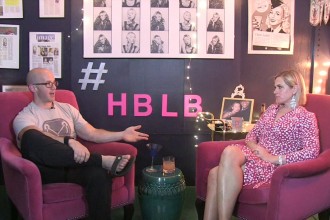We all went a little crazy over Powerball fever this week. Everyone knew chances were slim, but hey there was still a chance, right? Even if the odds were one in 292 million, it was worth the two buck buy-in. Here is a round up of our favorite pieces on the frenzy.
From the Washington Post:
If you think the Powerball jackpot soaring to $1.5 billion is just a pleasant surprise, think again: This was by design.
Sure, luck had a role. It always does. But a rule change in October made it much easier for the lottery jackpot to reach these world-record heights by making it a lot harder for players to win it.
The rush to buy tickets for the biggest-ever Powerball lottery jackpot is expected to push the prize ever higher by the time for Wednesday night’s drawing. (Reuters)
If you think the Powerball jackpot soaring to $1.5 billion is just a pleasant surprise, think again: This was by design.
Sure, luck had a role. It always does. But a rule change in October made it much easier for the lottery jackpot to reach these world-record heights by making it a lot harder for players to win it.
Technically speaking, winning a prize is easier now: A Powerball player has a 1-in-25 chance of winning something, compared to a 1-in-32 chance before the change, which was implemented in early October.
But that same change made taking home the jackpot much more difficult, as the odds rose from 1 in roughly 175 million to 1 in roughly 292 million.
The result? Jackpots that grow larger and larger — and even larger still — as more and more drawings fail to produce winning tickets.
To make the jackpot harder to win, the association, , which runs the game, simply increased the number of white balls. That change — growing the pool from 59 to 69 choices — more than doubled the available combinations of white balls. To make it easier to win any prize, the group decreased the number of Powerball options from 35 to 26.
The result? It is now harder to win all but the smallest prizes. The odds went up for the jackpot and the next five prizes.The only rewards that became easier to win were the two $4 prizes and one of the two $7 prizes.
Our favorite questions from a Q & A in The New York Times:
Q. Which state reaps the most lottery revenue?
A. New York, by far. The lottery there brought in $9.2 billion in 2014. Florida came in second with a little over half that amount, $5.3 billion, followed by California with $5 billion and Massachusetts with $4.8 billion.
Q. How much goes to state programs?
A. In New York, it was $3.1 billion. Florida funneled $1.4 billion to state programs, California $1.3 billion and Massachusetts $971 million.
Q. What kind of programs does lottery revenue pay for?
A. About two dozen states dedicate part or all of their lottery revenue to education programs. It is hard to rail against education funding — something state officials used as a strategic selling point when trying to persuade voters to embrace lotteries, a form of gambling. But other states (Arkansas, Connecticut and Delaware, for example) shift much of the money to their general revenue funds, and some use it for prisons, the environment and pensions.
Q. So the lottery frenzy is a good thing for states, right?
A. Supporters say that lottery revenue has helped increase funding in critical areas, especially for education. Georgia and Florida use it for college scholarships, for example. During the recession, lottery funds came in especially handy. But critics say state governments have used lottery money not to increase funding, but to supplant it. They charge that states have redirected existing money from education into other areas and used the lottery money to plug up the hole in a kind of shell game. “I don’t think things have changed much,” said Patrick A. Pierce, a co-author of a study on the topic and a professor of political science at St. Mary’s College in Indiana.
Q. Who plays the lottery?
A. Many studies have concluded that those who play the lottery regularly tend to be low-income and to spend more of their money, in relative terms, on tickets.
“People with more money spend more on lottery as a total, but they spend a negligible percentage of their income on it,” said Professor Just of Cornell, who just completed his third study of the lottery, this one focusing on Maine. “But people on lower income ranges spend sizable percentages of their income on lotto.”
Critics say this constitutes a regressive tax because it affects the poor more than the rich. But defenders of the lottery say that is simply not true: Playing the lottery is voluntary, so it is not a tax.
Other studies come up with different conclusions.
Q. Who gets most of the money: states or lottery winners?
A. This varies by state, but here are a few examples. States tend to have a similar division of lottery funds, although some make it more difficult than others to get this information. In Florida, which has an easy-to-read website, the bulk of the money, 65 percent, is used to pay off winners; 27 percent is steered toward education; 5.5 percent is paid to retailers in commissions; 1.4 percent goes to vendors; and 1.3 percent is used for operating expenses.
New York State uses 60 percent of the money for winners, 30 percent for education, 6 percent for retailer commissions, 1.6 percent for gambling contractor fees and 1.6 percent for other operating expenses.






